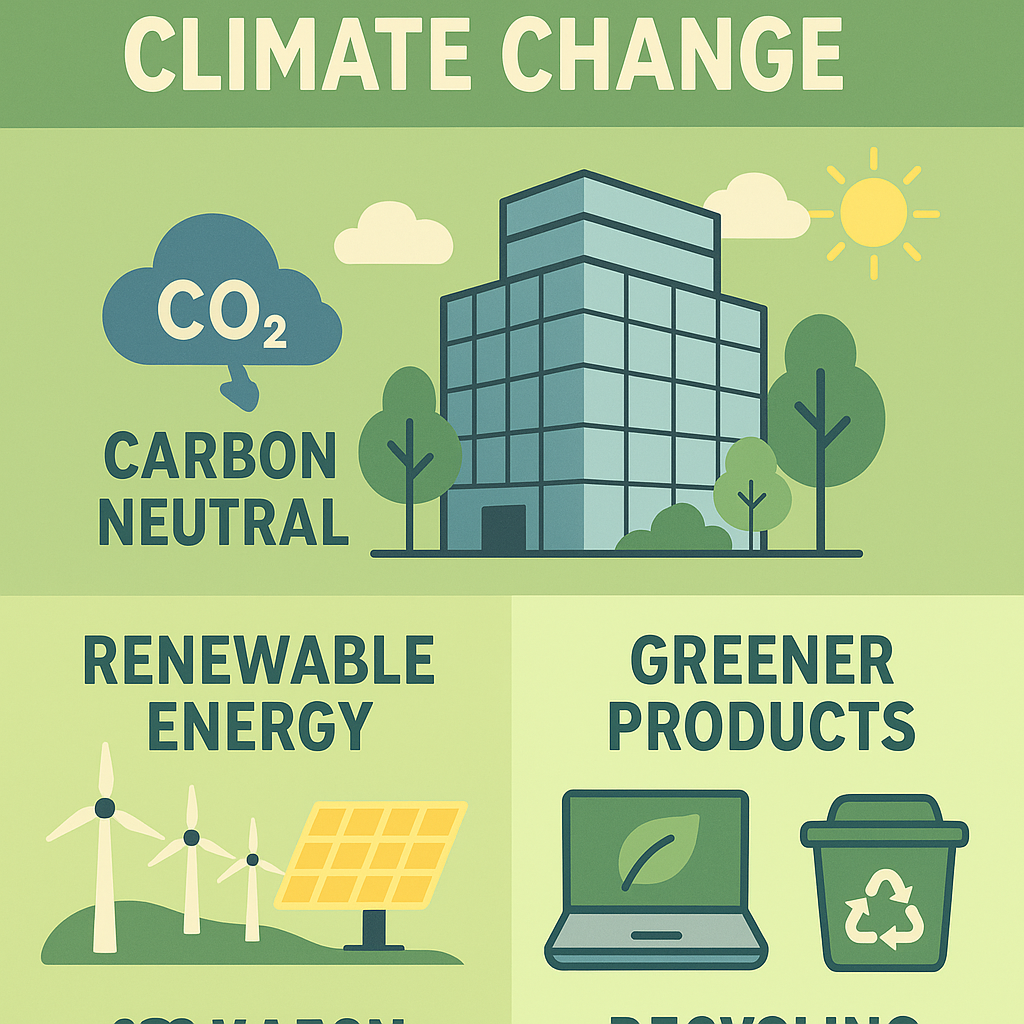Climate change is no longer a distant threat — it’s a present-day reality. From extreme weather to rising sea levels, the urgency to act is clear. And while governments and environmental groups have long been leading the charge, some of the world’s largest tech companies are now stepping up to do their part.
From carbon-neutral data centers to renewable energy investments, big tech is going green in a big way. But how far have they actually come? And are their efforts enough? Let’s take a closer look at how the major players in tech are addressing climate change — and shaping the future of sustainability.
Why Tech Companies Have a Role to Play
Tech companies may not produce smog-belching factories, but they still leave a significant carbon footprint. Their data centers consume massive amounts of electricity. Their supply chains span the globe. And their devices, while sleek and smart, create e-waste that can be difficult to recycle.
But with size comes power — and responsibility. Tech giants have the resources, talent, and influence to lead meaningful change. And with increasing pressure from consumers, investors, and governments, going green is not just a moral decision — it’s a strategic one.
Going Carbon Neutral — or Even Carbon Negative
Several leading tech companies have already reached carbon neutrality or made public commitments to do so.
- Apple announced that its entire global corporate operations have been carbon neutral since 2020. The company now plans to have every product it sells be carbon neutral by 2030 — from materials and manufacturing to shipping and recycling.
- Microsoft has taken it a step further by pledging to be carbon negative by 2030. That means removing more carbon from the atmosphere than it emits. By 2050, it also plans to remove all the carbon the company has emitted since its founding in 1975.
- Google has been carbon neutral since 2007 and aims to run on 24/7 carbon-free energy in all its data centers and campuses by 2030. This is one of the most ambitious energy goals in the corporate world.
These moves go beyond public relations — they involve rethinking entire business models and supply chains.
Investing in Renewable Energy
One of the biggest ways tech firms are reducing their emissions is by investing in renewable energy.
Tech companies are now among the world’s largest corporate buyers of clean energy, including solar, wind, and hydropower. For example:
- Amazon has become the largest corporate buyer of renewable energy in the world. Its goal is to power all its operations with 100% renewable energy by 2025.
- Meta (formerly Facebook) now powers its global operations with 100% renewable energy and has committed to reaching net zero emissions across its value chain by 2030.
These efforts are driving growth in the renewable energy sector and pushing utilities to offer greener options to more customers.
Greener Products and Packaging
Beyond operations, tech companies are also rethinking their products.
Apple, for instance, uses recycled aluminum and rare earth materials in its latest devices. Its packaging has become smaller, lighter, and made with less plastic and more recycled content.
Google’s hardware division has pledged to use recycled materials in all its products, and Microsoft has created a line of “Ocean Plastic Mouse” made from 20% recycled ocean waste.
These steps may seem small, but multiplied by millions of devices, they make a big difference.
Tackling E-Waste and Recycling
Electronic waste is one of the fastest-growing waste streams globally. In response, big tech firms are working on better recycling programs and circular economy solutions.
- Apple’s robot Daisy can disassemble iPhones to recover valuable materials for reuse.
- Dell offers free recycling for all its products and has pledged to reuse or recycle an equivalent product for every item a customer buys.
- HP has created closed-loop recycling systems that reuse old cartridges and laptops in new products.
While recycling is still a complex issue, these innovations mark real progress.
Climate Tech and Innovation
Tech companies aren’t just reducing their own footprint — they’re also investing in solutions that help others do the same.
Microsoft’s $1 billion Climate Innovation Fund supports carbon removal startups and sustainable technologies. Google is using AI to help cities reduce energy use and traffic congestion. Amazon’s Climate Pledge Fund supports startups developing decarbonization solutions.
By backing climate-focused innovation, these companies are enabling broader change far beyond their own walls.
Transparency and Accountability
Another positive shift: more transparency. Companies now release detailed sustainability reports, carbon audits, and third-party-verified data.
These reports allow consumers, investors, and regulators to track progress — and hold companies accountable when goals are missed. Openness is becoming a standard part of corporate sustainability.
Final Thoughts
The role of big tech in fighting climate change is both crucial and complicated. Their footprints are massive — but so is their potential to lead.
While it’s fair to question whether more can be done, it’s also clear that many of these companies are not just making promises — they’re making progress. Their green initiatives are helping to drive industry-wide change, spark innovation, and build momentum toward a more sustainable future.
As climate concerns grow, so will the need for real action. And in the race to save the planet, the world will be watching what tech does next.
